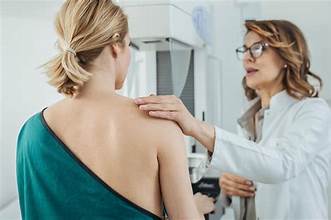How Advanced Breast Cancer Screening Works

Breast cancer is one of the most common cancers affecting women worldwide. Early detection through advanced breast cancer screening greatly improves the chances of successful treatment.
Modern screening techniques have evolved to become more accurate and less invasive, providing better outcomes for patients. This article explores how advanced breast cancer screening works, covering the latest technologies and methods used to detect the disease.
The Importance of Early Detection
Early detection of breast cancer is crucial because it allows for more treatment options and a better prognosis. Screening aims to identify cancer before symptoms develop, increasing the likelihood of detecting cancer at an early stage when it is most treatable. Regular screening is especially important for women with higher risk factors, such as a family history of breast cancer or genetic predispositions.
Advanced Testing Through Mammography
Mammography is the most common and effective screening tool for breast cancer. It uses low-dose X-rays to create detailed images of the breast tissue, allowing radiologists to detect abnormalities.
Digital Mammography
Digital mammography, an advancement over traditional film mammography, captures images electronically. This allows for better image storage, retrieval, and manipulation. Radiologists can enhance and magnify the images to get a clearer view of the breast tissue, improving the detection of small tumors that might be missed on film mammograms.
3D Mammography (Tomosynthesis)
3D mammography, or tomosynthesis, takes multiple X-ray images of the breast from different angles. These images are then reconstructed into a three-dimensional picture of the breast. This technology provides a more detailed view and reduces the overlap of tissues, which can hide tumors. 3D mammography has been shown to improve cancer detection rates and reduce the number of false positives.
Advanced Testing Through Modern Ultrasound Methods
Breast ultrasound uses sound waves to produce images of the breast tissue. It is often used as a supplementary tool to mammography, especially for women with dense breast tissue where mammograms may be less effective. Ultrasound is also used to further evaluate abnormalities found during a mammogram or physical exam.
Automated Breast Ultrasound (ABUS) is an advanced technique that scans the entire breast in a systematic way. It provides a comprehensive view, which is particularly useful for women with dense breasts. ABUS can detect cancers that mammograms might miss, making it a valuable addition to the screening process.
Advanced Testing With Magnetic Resonance Imaging (MRI)
Breast MRI is a highly sensitive screening tool that uses magnetic fields and radio waves to create detailed images of the breast. It is particularly useful for high-risk women, including those with a strong family history of breast cancer or genetic mutations (e.g., BRCA1 or BRCA2).
DCE-MRI involves injecting a contrast agent into the bloodstream before the scan. This contrast agent highlights areas of increased blood flow, which is common in cancerous tissues. DCE-MRI can detect small tumors that other screening methods might miss, making it an essential tool for early detection in high-risk women.
Advanced Screening with Molecular Breast Imaging (MBI)
Molecular Breast Imaging (MBI) is a nuclear medicine technique that involves injecting a small amount of radioactive tracer into the patient. Cancer cells, which have a higher metabolic rate, absorb more of the tracer and appear as bright spots on the imaging scan. MBI is particularly effective for women with dense breast tissue and can detect cancers that are not visible on mammograms.
Advanced Screening with Breast Biopsy
When a suspicious area is detected through screening, a biopsy is often performed to determine whether it is cancerous. During a biopsy, a small sample of breast tissue is removed and examined under a microscope. There are several types of biopsies, including:
Fine Needle Aspiration (FNA): Uses a thin needle to remove a small sample of tissue or fluid.
Core Needle Biopsy: Uses a larger needle to remove a core of tissue.
Surgical Biopsy: Involves removing a larger section of tissue surgically.
Advancements in imaging technology, such as stereotactic biopsy and MRI-guided biopsy, have made these procedures more accurate and less invasive.
Artificial Intelligence (AI) in Breast Cancer Screening
Artificial intelligence is playing an increasingly important role in breast cancer screening. AI algorithms can analyze mammograms, ultrasounds, and MRI scans with high accuracy, helping radiologists detect cancer earlier and more reliably. AI can also help reduce the workload of radiologists by prioritizing cases that need immediate attention.
Genetic Testing
Genetic testing has become an integral part of advanced breast cancer screening, especially for individuals with a family history of the disease or other risk factors. This testing helps identify specific genetic mutations that may increase the risk of developing breast cancer.
BRCA1 and BRCA2 Mutations
The BRCA1 and BRCA2 genes are the most well-known genes associated with an increased risk of breast cancer. Women who inherit mutations in these genes have a significantly higher risk of developing breast cancer compared to the general population. Genetic testing for these mutations can help identify individuals at high risk, allowing for more personalized screening and prevention strategies.
Panel Testing
Beyond BRCA1 and BRCA2, panel testing screens for multiple genes that may contribute to breast cancer risk. These panels include genes like TP53, PTEN, and PALB2, among others. Comprehensive genetic testing provides a broader understanding of an individual’s risk and informs tailored screening and prevention approaches.



